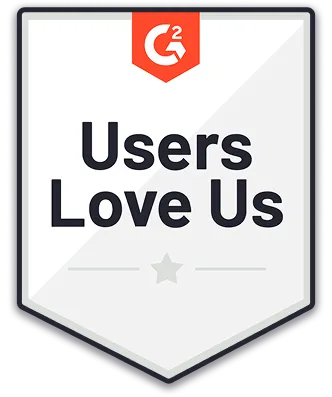
In the first part of this blog series, we discussed the importance of a digital asset accounting and bookkeeping platform that fully integrates with existing systems for enterprise organizations focused on robust financial reporting and compliance.
In this second part of the blog series, we will dive deeper into the remaining five must-have features of a digital asset accounting and bookkeeping platform, regardless of where an organization falls on the digital asset maturity curve. These features will include important aspects such as automation, accuracy, security, scalability, and more!
Let’s dig in!
Automated Accounting Workflow & Management
A digital asset accounting, tax, and compliance platform must be able to ease accounting workflows in order to be effective for businesses. This means that the platform must have features that enable businesses to efficiently and accurately manage their digital assets and transactions.
One of the key features of a digital asset accounting platform is the ability to categorize single or multiple transactions. The platform should also be able to process a high volume of transactions, such as 30 million or more per month. This is important because the blockchain can generate a large number of transactions, and a platform that can handle this volume is essential for businesses that want to manage their assets effectively.
High-Volume Transactions Recognition
An enterprise solution should also be able to roll up a high volume of transactions before syncing to your other accounting software (i.e., ERP/GL). This allows businesses to summarize multiple transactions into a single, easy-to-understand entry, making it easier to manage and analyze the data.
In addition, the platform should be able to apply conditional logic to automatically bulk categorize a wide variety of transactions (including internal transfers between multiple wallets/sources both belonging to the same organization). This can save time and reduce the risk of errors.
Finally, it is essential for the solution to have the ability to automatically detect, categorize and assign internal transfers (i.e., between multiple wallets/sources both belonging to the same organization).
Robust Digital Asset Pricing Engine
A digital asset accounting platform must be able to split, itemize and annotate transactions on a granular level. It should be able to automatically recognize and categorize fees.
Another critical capability is the ability to configure the source of digital asset pricing. When an organization performs principal market analysis, it is important for the solution to be flexible enough to implement an organization’s preferred pricing methodology.
The ability to specify and apply custom sources of pricing data, as well as the ability to model custom pricing methodologies through a pricing engine, allows users to tailor the asset pricing process to their specific needs and preferences. This flexibility is particularly important for users who may be dealing with unique or complex assets that require a more sophisticated approach to pricing.
Additionally the system must be able to manually override asset exchange rates while maintaining a full audit trail.
Efficient Transaction Reconciliation & Operations
One of the key features of a digital asset finance platform is the ability to perform sub-ledger and primary ledger reconciliation. This allows the platform to automatically match transactions recorded in the sub-ledger with those in the primary ledger, ensuring the accuracy and completeness of the company's financial records.
Another important feature of a digital asset finance platform is the segregation of duties for categorization and reconciliation. This means that different users can be assigned different roles and responsibilities within the platform, allowing them to reconcile transactions that have been categorized in different ways. For example, one user may be responsible for reconciling transactions related to accounts receivable, while another user may be responsible for reconciling transactions related to accounts payable.
The ability to bulk reconcile transactions is also a valuable feature of a digital asset finance platform. This allows users to quickly and efficiently reconcile large numbers of transactions at once, reducing the amount of time and effort required to maintain the accuracy of the company's financial records.
US GAAP and IFRS Standards
When it comes to accounting workflow, also ensure that your platform has functionality that follows US GAAP and International Financial Reporting Standards to ensure that the accounting records are accurate and comply with relevant regulations.
One key feature of digital asset accounting software is the ability to recognize and record any relevant realized and unrealized gains and losses, as well as impairment expenses. This is crucial for ensuring that the financial statements accurately reflect the value of the digital assets held by the business. Additionally, the software should be able to test for impairment with precise timing of impairment price capture, allowing the business to accurately assess the value of its digital assets and make informed decisions about their management.
Another important feature of digital asset accounting software is the ability to track accounting cost basis on a lot-by-lot basis. This is much more granular than a token-by-token basis, as the same token may have been bought at different prices, triggering differing cost-bases. This granular tracking is essential for ensuring that the accounting records accurately reflect the cost of acquiring each digital asset.
Finally, the software must have the ability to run accounting inventory and tax inventory picking strategies. For example, it should be able to use the FIFO method for accounting purposes and the Spec ID method for tax purposes. This will allow the business to accurately track the value of its digital assets for accounting and tax purposes, ensuring that it is in compliance with relevant regulations.
Tax Workflow
Last but not least, looking for a vendor that offers a robust and customizable tax workflow is important. One key feature to look for in a digital asset accounting platform is the ability to configure various inventory views for gain/loss analysis. This allows organizations to easily and accurately analyze their gains and losses according to different tax treatment strategies, such as FIFO, LIFO, SpecID and Cost Averaging, which is essential for tax purposes. A granular approach to tax strategy selection allows organizations to choose the most advantageous strategy for their specific situation, independent of other accounting workflows.
Another important feature to look for in a digital asset accounting platform is support for various SpecID treatments, such as highest cost, lowest cost, and optimizing for short-term or long-term gains. This allows organizations to tailor their tax strategy to their specific needs and goals.
Look for a solution that can:
- Process a high volume of transactions (30M+ per month)
- Roll up a high volume of transactions before ERP sync and reporting. Bitwave, for example, intelligently aggregates thousands of micro-transactions into single summarized transactions on an hourly basis!
- Apply conditional logic to automatically bulk categorize transactions. Bonus if the solution supports customizable tax strategy (FIFO, LIFO, COST AVG, SPEC ID), balance reports, and action trails to meet all of your financial reporting and audit needs.
- Split and itemize transactions on granular level
- Configure default/primary source/Exchange of pricing data
- Segregation of duties for categorization and reconciliation (i.e. has the ability for different users to reconcile categorized transactions)
- Bulk reconcile transactions
- Can test for impairment select precise timing of impairment price capture (e.g. daily low, end of the month)
- Can automatically track cost-basis on a lot-by-lot basis
Implementation & Customer Success
Implementation, onboarding, and customer success are crucial for a digital asset accounting tool. A well-designed implementation and onboarding process can help businesses quickly and easily set up and start using the tool, enabling them to take advantage of its full capabilities. In addition, a strong customer success team can provide ongoing support and guidance, helping businesses get the most out of the tool and ensuring that they are able to meet their goals.
Integration support is also important for a digital asset accounting tool. The vendor should have a track record of adding new integration points, such as support for additional blockchains, custodial wallets, and exchanges. This allows businesses to connect the tool to a wider range of systems and sources, providing them with more flexibility.
Look for Vendors that:
- Will assign a Customer Success Manager for strategic and operational support
- Will provide access to CPA / expertise for product consultation and best practice guidance
- Are readily available to offer technical support via phone, email, etc.
- Will help configure integration into ERP system]
- Has track record of adding new integration points (e.g. blockchains, custodial wallets, exchanges, etc.) that are not already supported out of the box
- Have a process to manage initial end-to-end data import activity
- Will configure connectivity / integration points on your behalf
Enterprise-Ready Functionality and User Experience
The last important consideration for businesses when selecting a digital asset finance platform is enterprise readiness. An enterprise-ready solution should have features that make it intuitive and easy to use for accountants and other users who are familiar with traditional accounting systems. This helps ensure that the platform is adopted quickly and smoothly and that users can take advantage of its full capabilities.
Role-based access control is also critical. This allows businesses to control who has access to different features and data within the platform, helping to prevent unauthorized access and ensure the security of sensitive information. In addition, support for single sign-on is important, as it allows users to access the platform using their existing login credentials, making it easier and more convenient to use.
Finally, look for a vendor that has sound information security practices. The vendor should have an updated SOC 1 Type II and SOC 2 Type II report from an auditor, indicating that their security controls have been independently tested and are in line with industry standards. In addition, the vendor should have a formalized Information Security Policy and should hire independent third parties for penetration testing services to ensure that the platform is secure and can protect sensitive data.
Multi-Entity Organizations
A multi-entity organization in the financial services industry is a company that operates multiple subsidiary companies or divisions, each with their own specific focus or offerings. For example, JPMorgan Chase has multiple subsidiaries that fall under it: JPMorgan Chase Bank, Chase Investment Services, and J.P. Morgan Asset Management. Each of these entities has its own distinct products and services, but they all operate under the umbrella of the larger parent company, JPMorgan Chase.
As such, it is critical that an enterprise digital asset accounting solution has the proper functionalities to provide distinct Parent/Enterprise views and consolidated child/client views. This is particularly important when segregating inventory between orgs.
Look for vendors that provide:
Sub-Entities: A digital asset accounting solution for multi-entity organizations must be able to handle the complexity of managing multiple wallets. The solution should provide the ability to easily create and manage sub-entities, and allow for customization of accounting methods and financial reporting for each subsidiary.
Consolidated Reporting: Multi-entity organizations require a consolidated view of their financial performance across all sub-entities. A digital asset accounting solution should provide the capability to easily combine financial information from all subsidiaries and present it in a single, unified report. This report should be flexible enough to meet the needs of different
stakeholders, such as investors, management, and regulators.
Multi-Inventory Management: Multi-entity organizations often have multiple inventory locations and warehouses to manage. A digital asset accounting solution should provide the ability to track inventory levels across multiple sub-entities, ensuring that resources are used efficiently and stock levels are optimized. This can help organizations reduce costs, improve customer service, and increase efficiency.
Institutional Providers
Financial institutions dealing with digital assets face a number of challenges in ensuring the trust and security of their clients’ assets. The constantly evolving digital asset landscape requires complex processes and controls to properly track, trade, and report on these assets.
In short, they need a solution that holistically addresses everything from asset and liability tracking to accounting and tax reporting.
At a minimum, look for vendors that provide:
- 1099 and 8949 data output: A good solution must easily provide cost-basis data to your clients with customizable disposal strategies (FIFO, LIFO, Avg Cost, Spec ID) for their trading, staking and other activities.
- FBO Entities: The solution must be able to effortlessly segregate and track client funds versus an organization’s digital asset inventory. The solution should be able to create and save multiple inventory views, making it easy to maintain separate accounting and tax books or to simulate gain/loss scenarios.
- Proof of Reserves & Liabilities: The ability to provide reporting on proof of reserves and liabilities for auditing purposes are essential features for a reliable and trustworthy enterprise digital asset accounting platform. A proof of reserves audit ensures that customers and the public that the custodian is sufficiently liquid and solvent, and they can withdraw funds anytime, providing transparency on the availability of their funds.
The auditing procedure includes assessing an exchange’s solvency, which produces only two outcomes: either the exchange is solvent if its assets exceed its obligations or liabilities or insolvent in all other cases.
Accounting, Taxes, Monitoring, and Reporting: Don’t Get Frustrated, Get Bitwave.

Bitwave is designed for organizations focused on robust financial reporting and compliance, offering enterprise-grade features like single-sign-on and field-level role-based access control for delineating accounting roles and responsibilities.
- Fair Value Accounting at Scale. Practice mark-to-market accounting with exacting precision across your entire inventory of digital assets.
- Streamlined Bookkeeping. Reconcile internal systems, external data, and on-chain sources with a single click of a button.
- DeFi & NFT Accounting. Manage treasury activities from token tracking, mining revenue, DeFi investments, and staking revenue in one location. Easily recognize NFT revenue, royalties, and fees and automatically categorize transactions at scale.
- Tax Optimization. Track the tax cost basis of every transaction and calculate short and long-term capital gains. Choose the best strategy for your business (e.g., FIFO, LIFO, Cost Average, SPEC ID
- Comprehensive Integrations. Bitwave is the only official marketplace partner of Quickbooks, NetSuite, Sage, and Xero – with support for other ERPs and General Ledgers. We also support over 200 blockchains, exchanges, custodians, and DeFi protocols.
- Institutional-grade functionality. Bitwave holistically addresses the complex process, audit, accounting, tax, and reporting needs of sophisticated financial organizations that custody, trade, and use digital assets.
Our customers also receive unparalleled support, including deployment and integration services, custom reporting, and advice on best practices from our Web3 and accounting experts.
Want to learn more? Schedule a call today.
Not ready to talk? No problem. Download your free checklist!


Disclaimer: The information provided in this blog post is for general informational purposes only and should not be construed as tax, accounting, or financial advice. The content is not intended to address the specific needs of any individual or organization, and readers are encouraged to consult with a qualified tax, accounting, or financial professional before making any decisions based on the information provided. The author and the publisher of this blog post disclaim any liability, loss, or risk incurred as a consequence, directly or indirectly, of the use or application of any of the contents herein.



.png)



